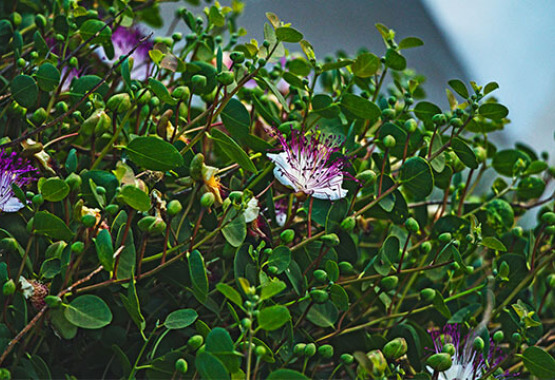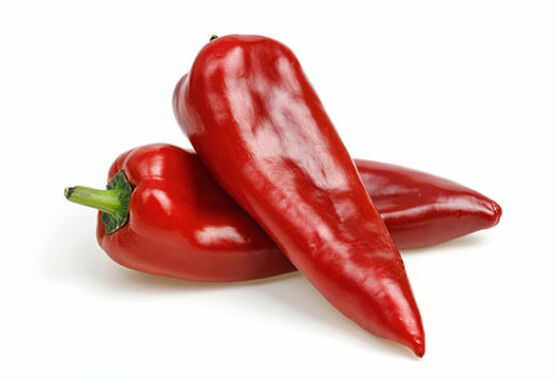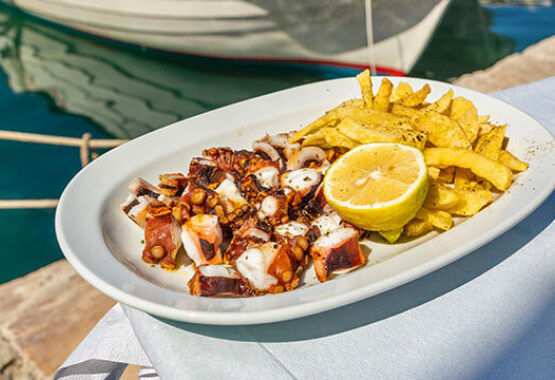
SANTORINI
Fava (yellow split peas)
White aubergines
Capers
Cherry tomatoes
Wine
Flavours from Santorini
Made from Volcanic Soil and Aegean Breeze!
Bathed in dazzling sunlight and swept by the Aegean breeze, Santorini is more than just breathtaking views and iconic architecture. Its fertile volcanic soil gives life to exceptional local products—vivid in flavour and rooted in the island’s unique environment. From ancient vineyards to sun-ripened vegetables, Santorini’s gastronomy is a true reflection of its landscape. Let’s explore some of the island’s most renowned delicacies.
Fava (yellow split peas)
Used in many recipes, ranging from freshly boiled plain fava to fava with pork or with tomato puree, or as in soup, with rice or in an omelette, these peas are popular with visitors to Santorini thanks to their fine taste.
White aubergines
The magic thing about this variety of aubergine is not just that its colour. It is also that the bitterness sometimes found in other types of aubergine is completely absent and instead the flesh is sweet and juicy.
Capers
Both the flowers and the leaves are used in local cuisine for their spicy sharp aroma.
Cherry tomatoes
The locals first cultivated this variety of tomatoes in the 18th century. Their unique taste is owed to the arid soil of the island.
Wine
If there was ever an island worthy of the nickname “the wine island”, then it is undoubtedly Santorini. The excavations at the archaeological site of Akrotiri have proved that wine making and trading used to be among the most important activities even as far back as prehistoric times. Several eruptions of the volcano over the millennia have added consecutive layers of volcanic matter, including ash, lava, and pumice to cover the limestone and slate subsoil, forming what the locals call “aspa”, i.e. hard, solid ground.
Over the years, grape growers have built terraces using petrified lava stones in order to prevent the soil being eroded by the strong winds, and to help retain what little rain falls. Thanks to geographical factors here, the vines are very healthy: the hot sun and strong winds dry up any dampness on the fruit and prevent diseases and other problems such as mildew and botrytis.
Over the years, grape growers have built terraces using petrified lava stones in order to prevent the soil being eroded by the strong winds, and to help retain what little rain falls. Thanks to geographical factors here, the vines are very healthy: the hot sun and strong winds dry up any dampness on the fruit and prevent diseases and other problems such as mildew and botrytis.
In other words, the principles of organic cultivation are automatically applied here, as the growers are left only with the tasks of sulphuration and pruning. The latter involves the use of a special technique to form a “basket” within which the grapes are protected from the sand carried by the wind.
Which are the best known varieties?
Some forty grape varieties produce an average yield of 350 kilos per 1000sqm in Santorini. Here are some of the best known varieties:
Accounting for 80% of the island’s production, Assyrtiko is widely cultivated throughout Greece due to its high adaptability to different bioclimatic conditions. This varietal is characterised by high acidity and freshness.
The white variety of Athiri produces wine with a high alcohol content and is usually mixed with Assyrtiko variety.
Aidani, with its sharp aroma, is mixed with Assyrtiko and Athiri to produce Vinsanto, a wine with a rich gold colour and an exceptional aroma achieved thanks to many years of ageing in the bottle and the use of ripe sun-dried white grapes.
Mavrotragano red variety is full of flavour and produces aged wines with aromas reminiscent of mild coffee, sweet red fruits and tobacco.
In the 70’s, wines produced using the varieties Assyrtiko, Athiri and Aidani gained the right to be lawfully acknowledged as QWPSR (Quality Wine Produced in a Specific Region).
Nykteri is a white wine, which ages in the barrel for several months and has a high alcohol content. It owes its name (Nykteri comes from “nykta” = night) to the fact that, in the past, the vinification procedure would take place at night to eliminate the risk of oxidisation.
Many wineries on Santorini are now museums. Make sure you visit a winery and do a little wine tasting yourself!
Some forty grape varieties produce an average yield of 350 kilos per 1000sqm in Santorini. Here are some of the best known varieties:
Accounting for 80% of the island’s production, Assyrtiko is widely cultivated throughout Greece due to its high adaptability to different bioclimatic conditions. This varietal is characterised by high acidity and freshness.
The white variety of Athiri produces wine with a high alcohol content and is usually mixed with Assyrtiko variety.
Aidani, with its sharp aroma, is mixed with Assyrtiko and Athiri to produce Vinsanto, a wine with a rich gold colour and an exceptional aroma achieved thanks to many years of ageing in the bottle and the use of ripe sun-dried white grapes.
Mavrotragano red variety is full of flavour and produces aged wines with aromas reminiscent of mild coffee, sweet red fruits and tobacco.
In the 70’s, wines produced using the varieties Assyrtiko, Athiri and Aidani gained the right to be lawfully acknowledged as QWPSR (Quality Wine Produced in a Specific Region).
Nykteri is a white wine, which ages in the barrel for several months and has a high alcohol content. It owes its name (Nykteri comes from “nykta” = night) to the fact that, in the past, the vinification procedure would take place at night to eliminate the risk of oxidisation.
Many wineries on Santorini are now museums. Make sure you visit a winery and do a little wine tasting yourself!




